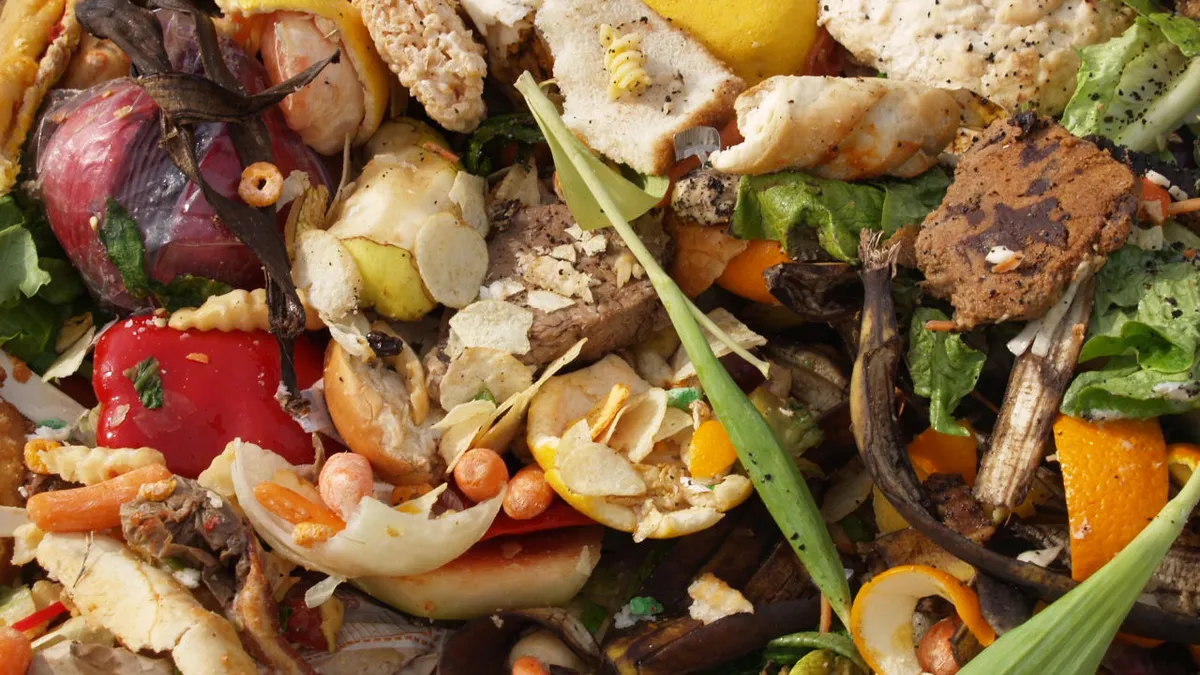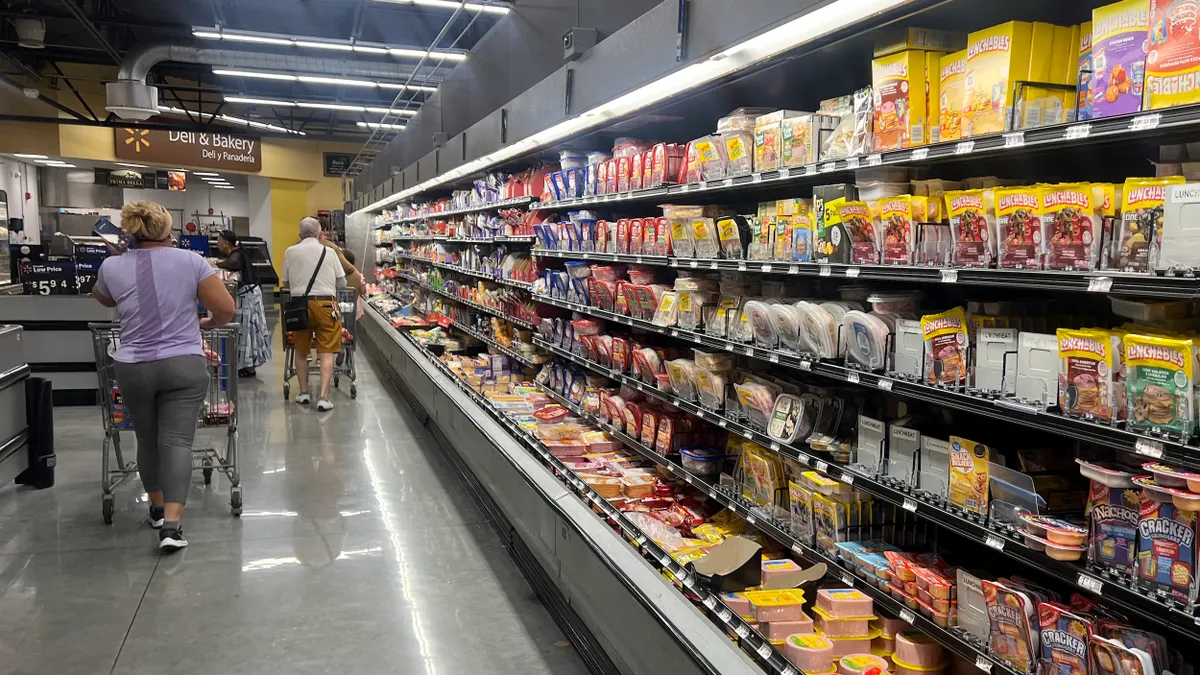Dive Brief:
- Americans throw away approximately 150,000 tons of food a day, according to data compiled by the U.S. Department of Agriculture. This translates to about 26% of food wasted by U.S. consumers from 2007-2014, and 30 million acres of cropland used to produce these items. The study was published in the journal PLOS ONE.
- Consumers who follow a healthier diet are the most wasteful: Fruits and vegetables and mixed fruit and vegetable dishes account for 39% of food waste, followed by dairy (17%), meat and mixed meat dishes (14%), and grains and grain mixed dishes (12%).
- "The current results suggest that simultaneous efforts to improve diet quality and reduce food waste may be critical. Practically, increasing consumers' knowledge about how to prepare and store fruits and vegetables will be an essential component to reducing food waste," the research notes.
Dive Insight:
Reducing food waste and improving diet quality are hard problems to solve, but this new research underscores how big of a challenge melding the two could be. The sheer volume of waste not only puts a strain on resources such as water and land, but it comes as the Earth's population is estimated to top 9 billion people by 2050.
Along with a potential environmental crisis is a humanitarian one, with one in eight Americans defined as food insecure — meaning they had difficulty at some point providing enough food for all family members. These statistics don't get any less shocking from a cost perspective. Though this latest research did not include food waste from restaurants or retail, the USDA estimates Americans waste more than $160 billion in food per year.
A potential solution is more consumer education on how to better store and more efficiently prepare produce, as well as education on the consequences of food waste. As people look to eat healthier and increase their consumption of fruits and vegetables, it stands to reason, based on this study, that waste in this area also will increase proportionately.
One potential solution for retailers and food manufacturers is to provide information on packaging or in produce departments, farmers markets or other points of purchase about the significant environmental impact caused by food waste. They also could engage in advertising or campaigns, particularly on social media popular with millennial shoppers.
Some retailers are already engaging in waste-reduction efforts. Whole Foods' staff sorts food waste at the retailer’s stores, and Trader Joe's donates items to food banks. Some retailers sell "ugly" produce to consumers at a discount. Walmart, for example, has taken to replacing a cracked egg in an egg carton so the entire package doesn't need to be tossed — a move that has saved millions of eggs.
Last summer, Kroger announced a new "moonshot" effort to eliminate food waste across the company by 2025. And in 2011, the Food Marketing Institute and the Grocery Manufacturers Association established the Food Waste Reduction Alliance, a coalition of manufacturers and retailers seeking to reduce food waste through recycling, charitable donations and other means
A recent analysis by the Center for Biological Diversity and the "Ugly" Fruit and Veg Campaign gave none of the 10 biggest U.S. food retailers an "A" on reducing the overall food waste problem, tracking and publicly reporting waste, and diverting what they can from the waste stream by selling imperfect produce. Walmart got the highest grade, earning a "B," while Aldi received the lone "D."
Manufacturers also can also focus on packaging innovation. Produce has high waste rates because of spoilage and blemishes, and advances in packaging can help curve some of these issues.
Technology also can be a useful tool in helping to reduce waste. Several technologies have hit the market to help consumers identify spoilage, remind shoppers of date labels and help with meal planning. Manufacturers and retailers can leverage software that helps analyze shelf life and inventory. In the fight against food waste, the investment in technology is a major tool and a competitive advantage.














